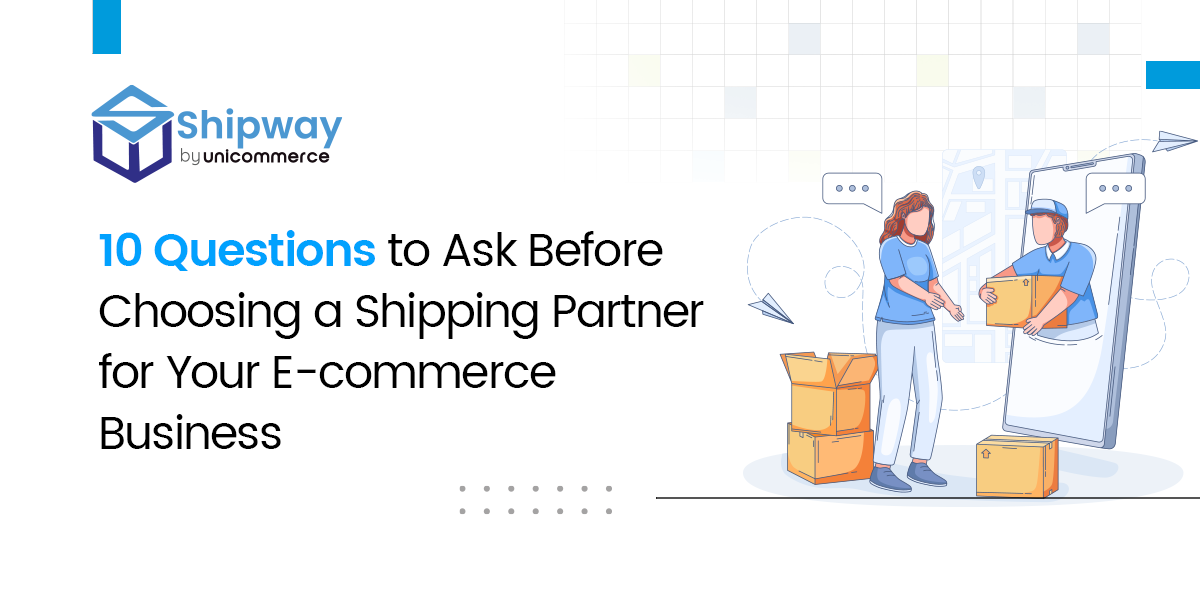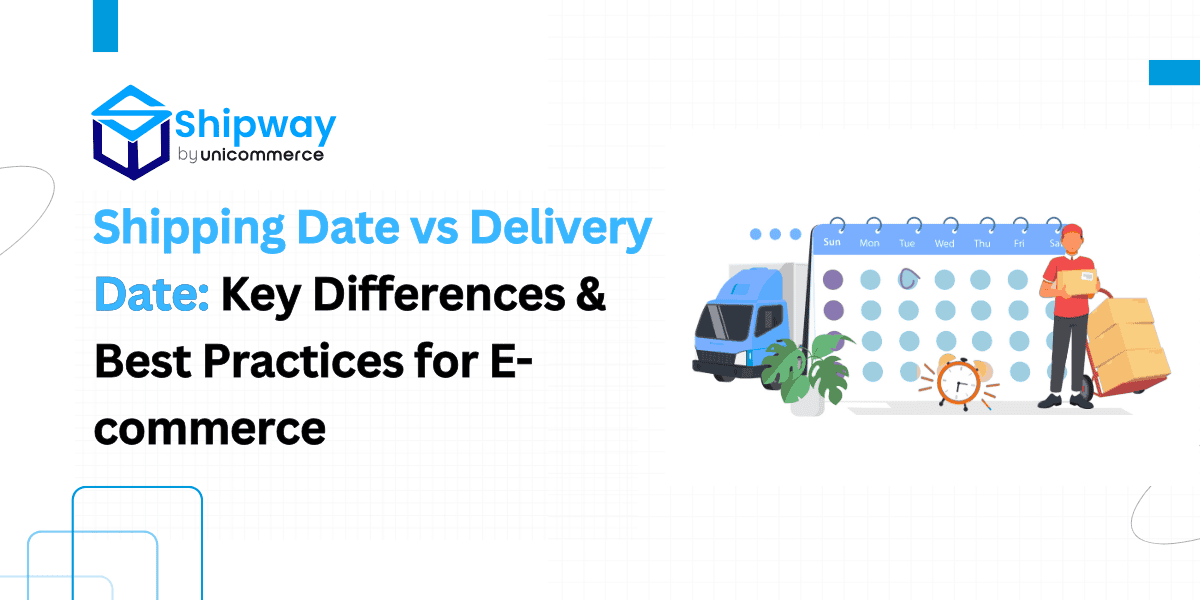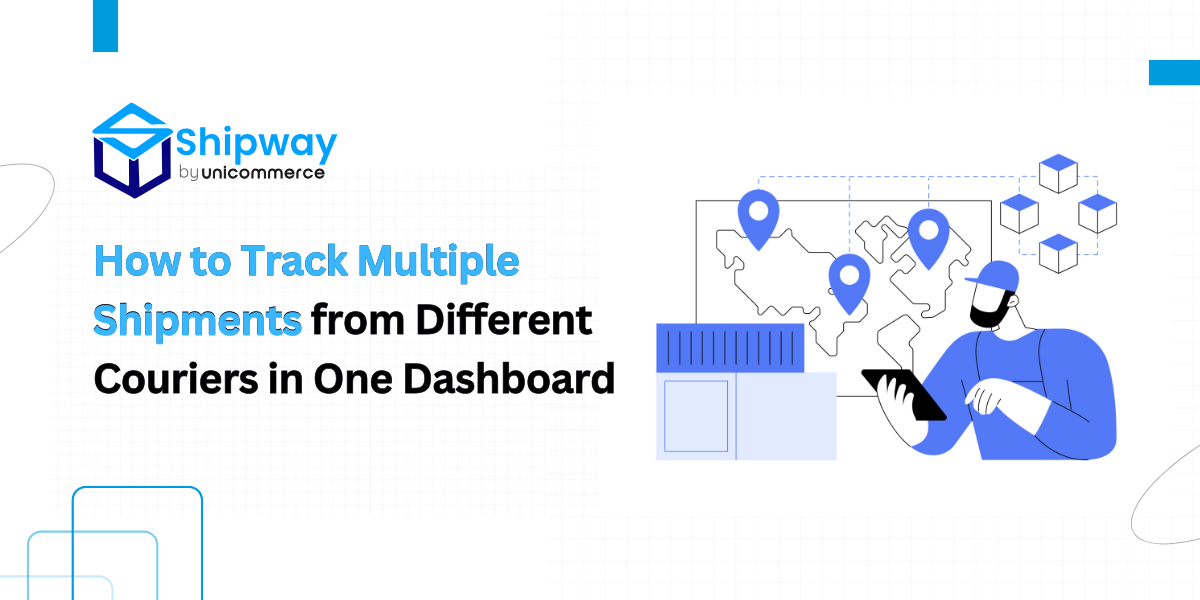If you’re selling online, you’ve probably felt the confusion of tracking shipments across multiple courier partners. One order is with Delhivery, another with Bluedart, a third with Xpressbees and you’re stuck hopping between dashboards, copying tracking links, and answering endless “Where’s my order?” calls. It becomes exhausting to handle all these challenges at the same time.
Every minute spent switching tabs or chasing courier support drains out your productivity. Your team loses valuable time, customers lose trust, and your business loses money. And during peak season? The problem only multiplies. That’s where multi-courier tracking in one dashboard becomes a game-changer.
In this blog, we’ve explained how a centralized logistics tracking dashboard can simplify your shipping operations, reduce RTOs, and turn your shipping chaos into a streamlined, stress-free workflow.
Why Shipment Tracking Matters for Ecommerce Success
When your business is handling a high volume of orders, tracking each shipment in real-time becomes essential to avoid delays and stay in control. If there’s a gap in tracking, it often leads to delayed communication, missed delivery exceptions, and unhappy customers, something no growing business can afford.
To overcome these challenges, many sellers are now turning to centralized shipment tracking platforms. These tools consolidate tracking updates from all courier partners into a single dashboard, offering complete visibility whether an order is in transit, delayed, or returned without the hassle of switching between multiple courier panels.
Here’s why having a robust shipment tracking system is critical for your business:
1. Centralized Visibility
View the status of all your shipments across different courier partners in one dashboard, making it easier to monitor and manage deliveries at scale.
2. Faster Response to Delivery Issues
Quickly identify delayed or failed deliveries and take timely action to reduce the chances of RTOs or customer complaints.
3. Improved Customer Experience
Share accurate tracking information with customers via automated SMS, email, or WhatsApp updates, enhancing post-purchase experience, reducing support queries and building trust.
4. Operational Efficiency
Eliminate the need to check multiple courier panels. A centralized view saves time for your team and streamlines daily workflows.
5. Performance Insights
Access delivery reports and courier performance metrics to make data-backed decisions and optimize your shipping strategy.
6. Lower Returns and RTOs
Proactive tracking helps prevent missed deliveries and increases the success rate of first-attempt deliveries, improving overall margins.
Common Challenges of Tracking Through Individual Courier Portals
Working with multiple courier partners is common for growing ecommerce businesses. But when it comes to tracking shipments, using each courier’s portal individually quickly becomes chaotic.
Here’s why it creates more hassle than help:
1 . Multiple dashboards, multiple logins
Your team ends up spending valuable time switching between courier panels just to track basic order statuses.
2. No standard tracking format
Each courier shows statuses differently; some may show “Out for Delivery,” while others say “In Transit.” There’s no uniform view, which leads to confusion and missed updates.
3. No single source of truth
You can’t see the complete picture of your shipments across couriers. There’s no way to quickly know which orders are delayed, which are undelivered, or which are at risk of RTO.
4. Delayed actions on delivery issues
Without real-time visibility across all couriers, you may miss NDRs or failed delivery attempts, leading to returns and unhappy customers.
5. Time-consuming support workflows
Customer queries like “Where is my order?” require your team to manually check multiple portals, slowing down response time.
6. Limited analytics and reporting
Courier dashboards don’t provide cross-courier performance data. You don’t get clear insights on delivery timelines, success rates, or problem areas.
Simply put, managing tracking across individual courier platforms may work at a small scale but it quickly becomes unmanageable as your order volume grows.
How a Unified Shipment Tracking Dashboard Helps Sellers
Working with multiple courier partners is common, but tracking shipments across different portals isn’t efficient. A unified dashboard simplifies this by bringing all your order updates into one place, so your operations run smoother and faster.
Here’s how sellers benefit from using it:
- Quick access to all shipments in one view: No need to log in to different courier portals. You get a real-time snapshot of where every order is dispatched, in transit, delayed, or returned- all on one platform.
- Faster response to delivery issues: As soon as a shipment is delayed or marked undelivered, your team is alerted. This allows you to take timely action, reduce returns, and improve delivery success.
- Simplified customer support: When a customer asks for an update, your team doesn’t need to check multiple systems. With centralized tracking, they can respond in seconds with accurate, real-time information.
- Better coordination across teams: Your warehouse, support, and logistics teams all work off the same system. Everyone sees the same status, which helps avoid internal miscommunication or delays.
- Clearer courier performance insights: You can compare how each courier is performing, delivery timelines, failure rates, and more and make smarter decisions about whom to allocate orders to.
- Time savings and higher efficiency: Manual tracking eats up hours every week. A unified dashboard automates that part of the workflow, helping your team focus on exceptions and problem-solving instead.
What to Expect from an Efficient Shipment Tracking Dashboard
The right tracking dashboard should do more than just show delivery updates. It should simplify your workflow, reduce manual effort, and give your team the clarity needed to manage post-shipping operations confidently. Here are some key features to look for:
- Multi-Courier Integration: The dashboard should support all the courier partners you work with, so you don’t have to switch between different systems.
- Live Tracking Updates: Real-time status updates ensure your team always has the latest information—no waiting, no refreshes.
- Smart Filters & Search: Easily find orders by AWB number, order ID, courier name, delivery status, or date range, saving time during high-volume days.
- NDR and RTO Visibility: The system should flag undelivered or returned shipments clearly so your team can follow up before it affects your bottom line.
- Delivery Reports & Analytics: Courier-wise performance data helps you identify issues early and make more informed decisions on partner allocation.
- Customer Notification Options: Some order tracking platforms also let you trigger automated delivery updates via email, SMS, or WhatsApp, keeping customers informed proactively.
- Easy Integration with OMS or WMS: A good tracking dashboard should plug into your existing systems seamlessly, making tracking part of your daily operations not another tool to manage.
7 Ways Shipway Simplifies Multi-Shipment Tracking for Sellers
Shipway helps e-commerce businesses manage post-order operations more efficiently by centralizing shipment tracking across multiple courier partners. Here are seven ways it simplifies the entire process:
- Automated Notifications: Keep your customers updated at every stage of the delivery journey. Shipway sends real-time SMS and email alerts, reducing manual follow-ups and improving post-purchase communication.
- Branded Tracking Pages: Create a seamless customer experience with branded tracking pages customized to your brand. Add your logo, colors, and messaging to build trust and increase engagement.
- Multi-Carrier Integration: Manage shipments from 100+ courier partners through one unified dashboard. No more switching between portals, Shipway brings all tracking data into a single view.
- Real-Time Shipment Tracking: View the live status and location of each order as it moves through the delivery network. This helps you stay ahead of delays and respond quickly when issues arise.
- NDR Management: Get clear visibility into Non-Delivery Reports (NDRs) and take timely action to reduce failed deliveries. Shipway helps you minimize RTOs and improve your delivery success rate.
- Returns Management: Streamline your return process with automated return request handling. It reduces manual intervention, speeds up the workflow, and improves customer satisfaction.
- Performance Analytics: Track courier performance, delivery timelines, and exception trends with detailed analytics. Use these insights to optimize shipping strategy and reduce costs over time.
Ready to Centralize Your Tracking? Here’s Your Next Step
As e-commerce businesses grow, so does the complexity of managing shipments across multiple courier partners. Manually tracking orders through separate courier portals not only slows down your operations but also increases the risk of delays, returns, and customer dissatisfaction.
Using a unified shipment tracking dashboard is the most efficient way to stay on top of your logistics. It brings all your orders into a single view, enables faster decision-making, and helps your teams work more efficiently, whether it’s customer support, operations, or fulfillment.
Ecommerce shipping tools like Shipway make this process simple, scalable, and automated. With features like real-time tracking, automated alerts, NDR handling, and courier performance analytics, sellers get full visibility and control without adding complexity to their workflow.
If you’re managing multiple courier partners, it’s time to shift from manual tracking to a smarter, centralized solution that grows with your business.
A
Why should I use a unified dashboard to track shipments from multiple couriers?
A unified dashboard saves time by consolidating all courier updates in one place, reduces manual effort, and ensures you never miss critical delivery updates.
How can I integrate different courier partners into a single tracking system?
Most shipping and logistics platforms offer API or plug-and-play integrations with major courier partners. Once connected, all tracking details automatically flow into one dashboard.
Can I get real-time updates for all shipments in one dashboard?
Yes. A centralized system provides real-time status updates from every courier, so you can track orders without logging into multiple portals.
What kind of insights can I get from a multi-courier tracking dashboard?
You can view shipment status, delays, RTO (Return to Origin) trends, delivery performance, and customer experience metrics in one place.
Is it possible to share tracking details with customers from a unified dashboard?
Absolutely. Many platforms let you generate branded tracking pages or automated notifications that keep customers informed about their order status across couriers.

10 Questions to Ask Before Choosing a Shipping Partner for Your E-commerce Business
Top 10 Questions to Ask Before Choosing a Shipping Company Setting up an e-commerce business is only the first step. Long-term success depends on how efficiently your orders reach customers, and that’s where choosing the right shipping partner becomes critical. A...

Top Third-Party Logistics Companies in India for E-commerce (2025)
Choosing the right third-party logistics company is crucial for any eCommerce business in India. A reliable 3PL partner ensures faster deliveries, secure handling of products, cost-effective operations, and seamless integration with your online store. By outsourcing...

Shipping Date vs Delivery Date: Guide for Ecommerce Sellers & Buyers
Thinking “Order is Shipped” means “Delivered”? Not quite. In e-commerce, shipping and delivery dates are not interchangeable. In simple terms, a shipping date is the day an order leaves the seller’s hands, while a delivery date is the day that the order arrives at the...


